Welcome, fellow travelers, to the enchanting land of Egypt, where the pyramids stand tall, the Nile River winds gracefully, and the aroma of delicious cuisine fills the air. As you embark on your Egyptian adventure with Osiris Tours – your key to luxury and private guided Egypt tours – don’t miss out on the heart and soul of this captivating country: its traditional dishes. Egyptian cuisine is a tapestry of flavors, rich in history and cultural significance.
In this culinary expedition, we’ll lead you through ten mouthwatering traditional Egyptian dishes that not only satisfy your taste buds but also tell stories of generations past. From the bustling streets of Cairo to the serene banks of the Nile, each dish carries the essence of Egypt’s culinary heritage.
Immerse yourself in Egypt’s vibrant food scene with Osiris Tours’ private luxury tours. Our expert guides will take you on a journey through local eateries, markets, and family gatherings to experience authentic Egyptian cuisine firsthand. Customize your tour for an unforgettable gourmet adventure!
So, loosen your belts, prepare your taste buds for a treat, and let’s dive into the vibrant world of Egyptian gastronomy with Osiris Tours by your side. Join us as we explore the streets and markets, savoring the unique and delightful flavors that make Egypt a true haven for food enthusiasts.
Table of Contents
1. Koshari: A Bowl of Egyptian Comfort
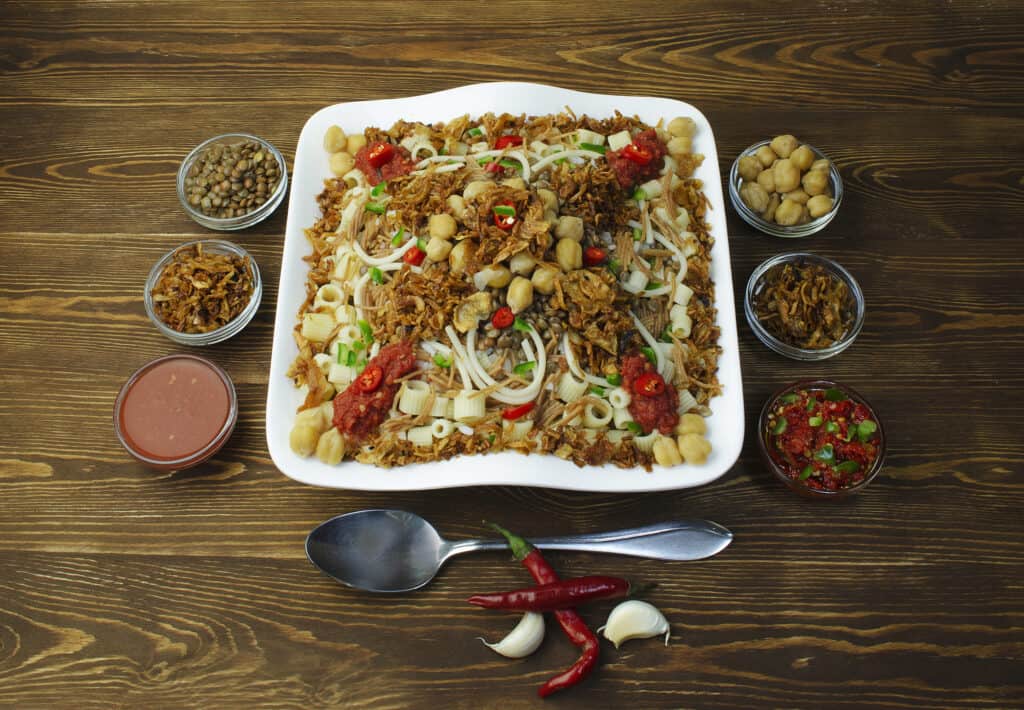
Our culinary journey begins with a dish that embodies the spirit of Egyptian comfort food – Koshari. Originating from the bustling streets of Cairo, Koshari is a hearty and satisfying blend of lentils, rice, macaroni, and chickpeas, topped with a zesty tomato sauce and crispy fried onions. This savory medley reflects the diverse cultural influences that have shaped Egypt over the centuries.
Simple yet flavorful, Koshari’s magic lies in its humble ingredients. Lentils and rice form the hearty base, while macaroni and chickpeas add a delightful texture. The dish is elevated with a generous drizzle of spiced tomato sauce and a crown of crispy fried onions. The result is a symphony of tastes and textures that dance on your palate with every bite.
Koshari is more than just a meal; it’s a cultural icon that transcends social and economic boundaries. Found in street markets, local eateries, and fine dining establishments alike, Koshari is the ultimate comfort food for Egyptians. Its popularity is a testament to the dish’s ability to bring people together over a shared love for simple, delicious flavors.
2. Ful Medames: A Morning Ritual in Every Spoonful
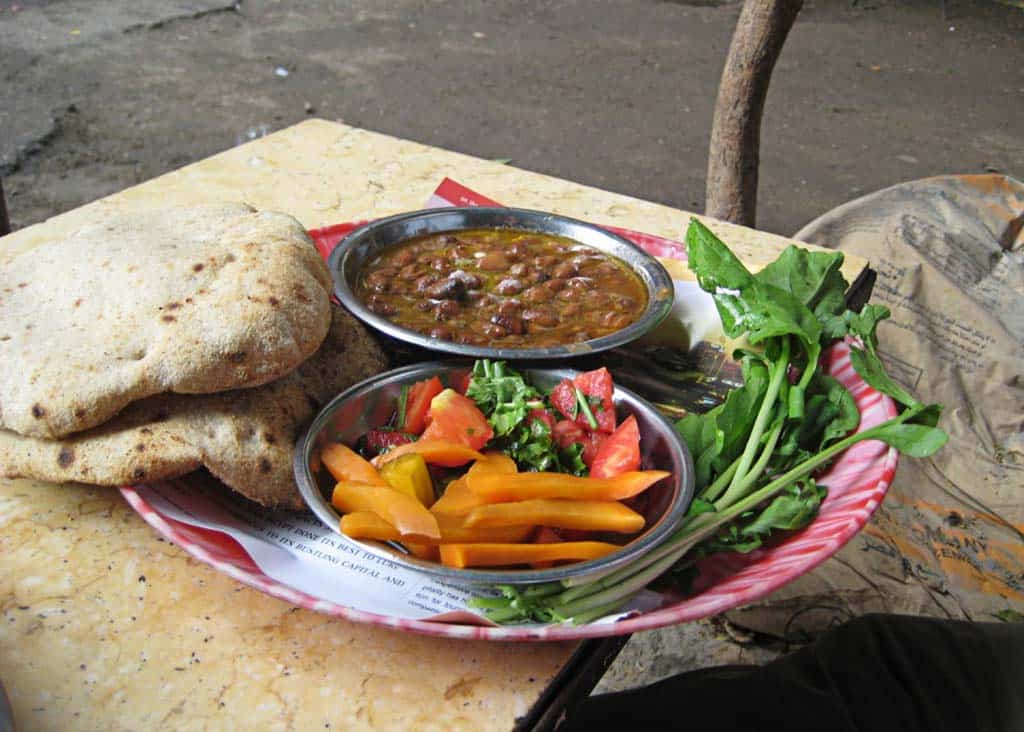
As the sun rises over the ancient land of Egypt, another culinary gem emerges to greet the day – Ful Medames. The rich, earthy aroma of simmering fava beans permeates the air, signaling the start of another day. This traditional breakfast dish has been a staple for centuries, offering a nutritious and flavorful start to the morning.
The humble fava bean is the star ingredient of Ful Medames. Slow-cooked to perfection, the beans transform into a lush, velvety stew. Aromatic notes of garlic, cumin, and olive oil season the beans during cooking, infusing each spoonful with warmth and comfort. The beans meld into a smooth, creamy texture reminiscent of refried beans, contrasted by the occasional whole bean that offers a satisfying bite.
Garnished with diced tomato, onion, and bright parsley, Ful Medames is a colorful medley in addition to an aromatic one. The rich amber hue of the bean stew is vibrant against the crimson of tomatoes and deep green of parsley. The bean’s creamy texture perfectly complements the fresh crunch of its garnishes. Each component balances the next, making Ful Medames a multidimensional comfort to enjoy.
While Ful Medames is enjoyed throughout Egypt, each region adds its own unique touch to the dish. In Cairo, you might find it served with a side of hard-boiled eggs, while in Alexandria, a squeeze of lemon may be the preferred addition. Whether you’re in a bustling city or a serene coastal town, Ful Medames adapts to local tastes while maintaining its core essence.
3. Taameya: The Irresistible Crunch of Egyptian Falafel
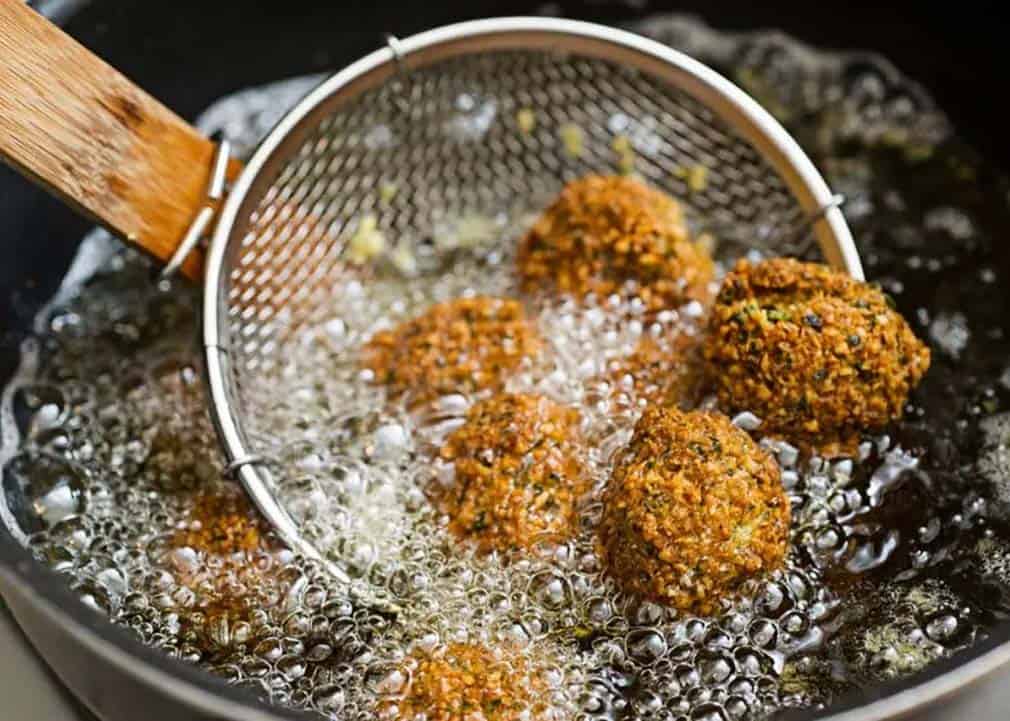
As we explore the vibrant tapestry of Egyptian cuisine, we encounter Taameya, a flavorful delight that has won the hearts of food enthusiasts worldwide. Known as Egyptian falafel, Taameya is not just a snack; it’s a culinary tradition that traces its roots back through centuries, offering a crunchy exterior that gives way to a soft, herb-infused interior.
Taameya begins with fava beans and/or chickpeas blended with aromatic herbs such as parsley, cilantro, and green onions. This vibrant mixture is seasoned with cumin, coriander, and garlic, creating a fragrant and well-balanced falafel base. The mixture is then shaped into small patties before being deep-fried to a golden perfection.
The result is a crispy exterior that encases a tender, herb-infused core. Served hot and often nestled in pita bread, Taameya is accompanied by a variety of fresh vegetables, tahini sauce, and sometimes a dash of hot sauce, creating a symphony of textures and flavors.
Taameya holds a special place in Egyptian street food culture. Whether enjoyed as a quick bite on the go or savored leisurely in a local eatery, the allure of Taameya lies in its versatility. It can be served as a sandwich, wrapped in flatbread with a medley of fresh ingredients, or plated with a side of vibrant salads.
In Egypt, it’s not uncommon to find Taameya stands lining the streets, with the enticing aroma of freshly fried falafel drawing in locals and tourists alike. The crunch of Taameya is a celebration of tradition and innovation, making it a must-try for those seeking an authentic taste of Egyptian street food.
4. Molokhia: Verdant Elegance on Egyptian Tables
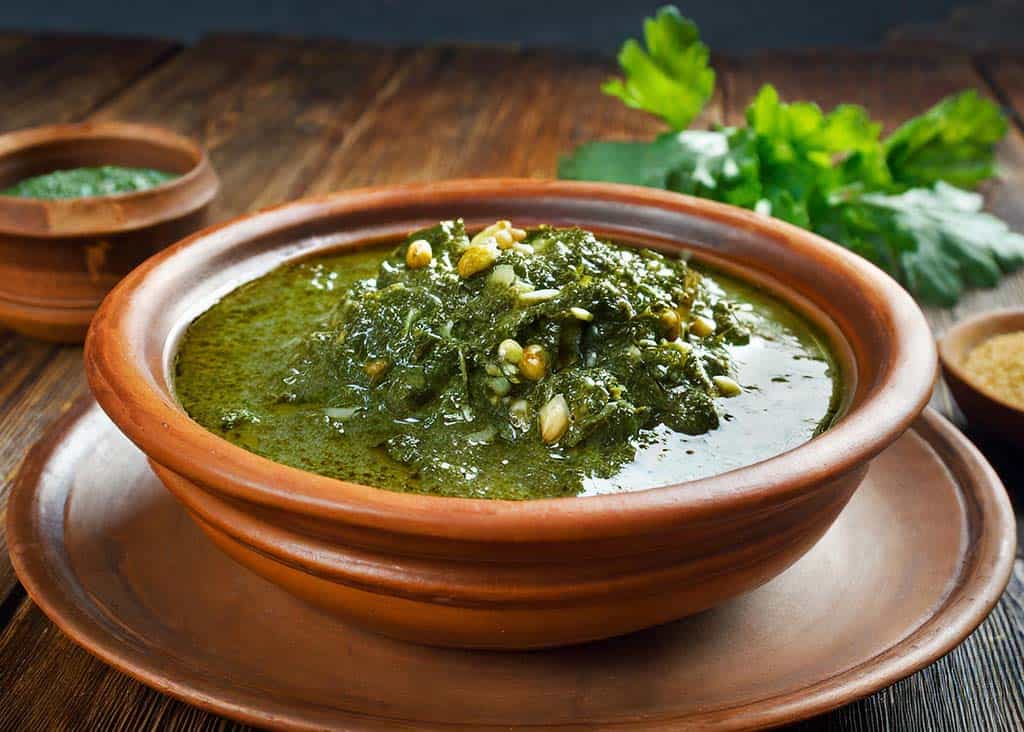
Prepare your taste buds for a journey into the green heart of Egyptian cuisine with Molokhia. This dish, named after its star ingredient, the Molokhia leaf, is a culinary masterpiece that has graced Egyptian tables for centuries. Loved for its distinctive flavor and velvety texture, Molokhia is a testament to the country’s agricultural bounty and culinary finesse.
Molokhia, also known as Egyptian spinach, is the main player in this dish. The leaves are finely chopped and cooked to perfection in a flavorful broth made with garlic, coriander, and sometimes a touch of lemon. The result is a lush, green stew with a consistency reminiscent of okra, creating a harmonious blend of earthy and citrusy notes.
The dish is often accompanied by rice or Egyptian flatbread, offering a delightful balance to the richness of the Molokhia. To add a touch of indulgence, it is not uncommon to find Molokhia served with tender pieces of chicken or rabbit.
Molokhia is more than just a meal; it’s a culinary tradition woven into the fabric of Egyptian culture. It frequently graces the tables during festive occasions, family gatherings, and celebrations. Its green hue symbolizes prosperity and fertility, making it a staple during weddings and other joyous events.
5. Fattah: A Tapestry of Tradition and Flavor, from Eid to Christmas
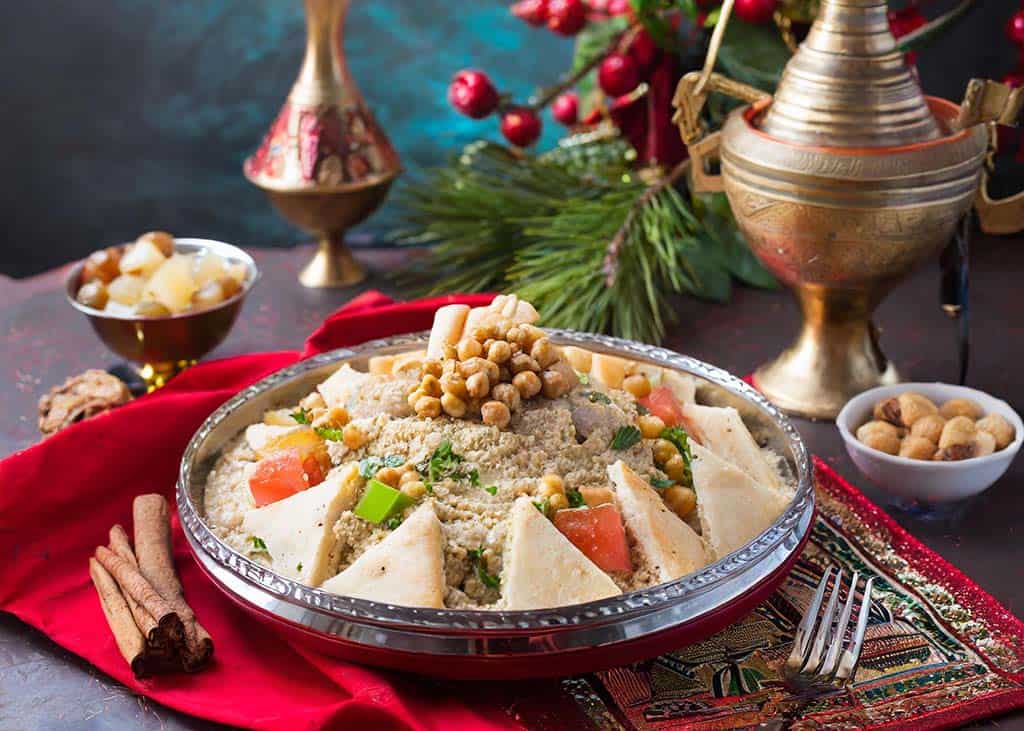
As we delve deeper into the heart of Egyptian cuisine, we encounter Fattah, a dish that encapsulates the essence of celebration and communal dining. Rooted in historical significance, Fattah has been gracing Egyptian tables for centuries, evolving from ancient feasts to modern family gatherings.
Fattah is a meticulously crafted dish, bringing together layers of flavor and texture. At its core, it consists of rice and pieces of crispy bread soaked in a flavorful broth made with garlic, vinegar, and lamb or beef broth. The dish is then adorned with tender pieces of meat, creating a harmonious blend of savory goodness.
To elevate the dish, it is topped with a garlicky tomato sauce and garnished with fresh herbs, providing a burst of freshness to complement the richness of the meat and broth-soaked bread.
Fattah is not an everyday meal; it is reserved for special occasions and celebratory feasts. Traditionally, it is a dish served during Eid al-Adha, a significant Islamic festival marking the end of the Hajj pilgrimage. Fattah symbolizes abundance and gratitude, making it a centerpiece of joyous gatherings where family and friends come together to share in the festivities.
Interestingly, Fattah is not limited to Eid celebrations alone. In Egypt, it has found a place on Christmas tables as well. Whether it’s the joyous festivities of Eid or the festive spirit of Christmas, Fattah’s rich flavors and cultural significance make it a beloved dish that transcends religious boundaries, symbolizing unity and shared celebrations.
6. Hawawshi: The Crispy Delight of Egyptian Street Eats
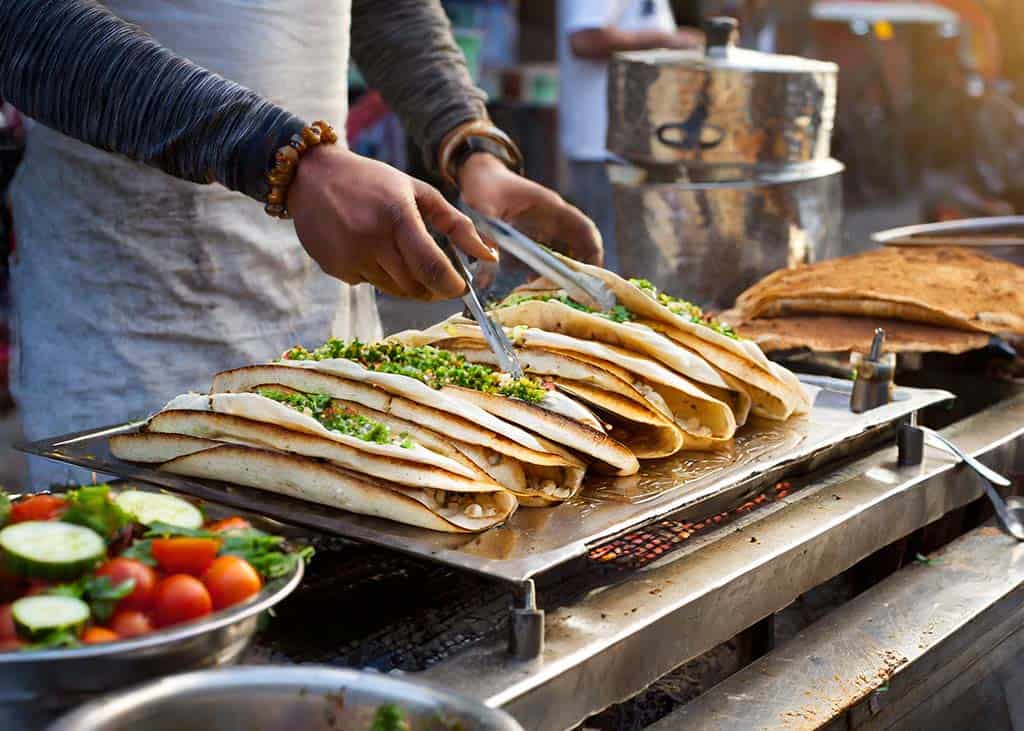
Our culinary exploration through Egypt takes us to the lively streets where the tantalizing aroma of grilled meat and spices fills the air. Meet Hawawshi, a savory delight that has become synonymous with Egyptian street food. This handheld masterpiece combines flavorful minced meat, aromatic herbs, and the crispiness of freshly baked bread, creating a culinary experience that’s both bold and satisfying.
Hawawshi is a simple yet brilliant creation. Minced meat, often a mix of beef or lamb with onions and a blend of spices, is generously stuffed into a pocket of dough. The dough is then pressed and flattened before being baked or grilled to perfection. This results in a golden, crispy exterior that gives way to a succulent, flavorful filling.
The secret to Hawawshi’s allure lies in the harmonious blend of spices used in the meat mixture, infusing every bite with a symphony of flavors. The contrast between the crunchy outer layer and the juicy, spiced meat inside is what makes Hawawshi a favorite among locals and travelers alike.
Hawawshi is often served with tahini sauce, adding a creamy and nutty element that complements the savory goodness of the meat. Some variations may include additional ingredients such as garlic, bell peppers, or chili, offering a spicy kick to the classic recipe.
7. Samak Mashwi: A Seaside Symphony of Grilled Delight
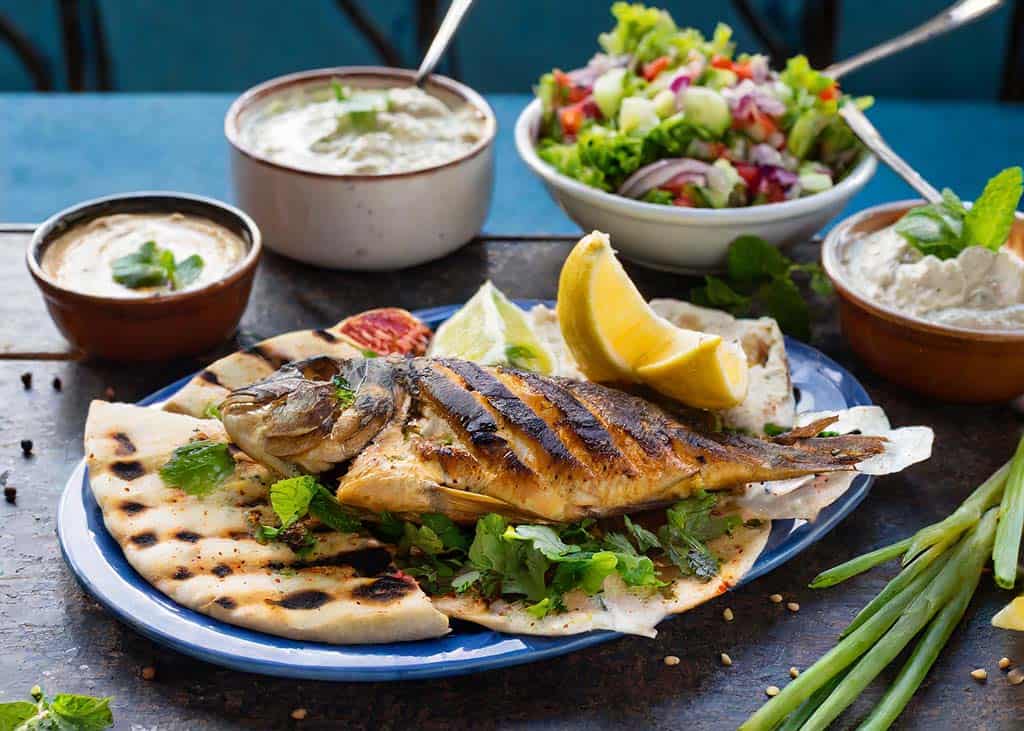
Our culinary expedition through Egypt brings us to the coastal delights of Samak Mashwi – a dish that celebrates the bounties of the Mediterranean and Red Sea. Translated as “grilled fish,” Samak Mashwi is a testament to Egypt’s rich coastal culture, where the freshness of the catch meets the mastery of open-flame cooking.
At the heart of Samak Mashwi is the choice of fish, often locally sourced and selected for its freshness and flavor. Popular varieties include sea bass, red snapper, or bream. The fish is meticulously cleaned, scaled, and then generously marinated in a blend of garlic, herbs, olive oil, and lemon juice. This flavorful infusion ensures that every bite of the grilled fish is a symphony of Mediterranean-inspired tastes.
The marinated fish is expertly grilled over an open flame, imparting a smoky char and enhancing its natural flavors. Whether you’re seaside in Alexandria, along the bustling streets of Cairo, or at a beachside restaurant in Sharm El Sheikh, the aroma of Samak Mashwi grilling is an irresistible invitation to savor the sea’s bounty.
Samak Mashwi is often served with a side of tahini sauce, fresh salads, and Egyptian flatbread. The combination of smoky grilled fish and the cool, creamy tahini creates a harmonious balance of textures and tastes. Dining on Samak Mashwi is not just a meal; it’s a sensory experience that immerses you in the coastal vibes of Egypt.
While coastal regions are the natural haven for Samak Mashwi, you’ll find variations of this dish throughout the country. From beachside cafes to local eateries, the charm of Samak Mashwi is that it transcends geographical boundaries, offering a taste of the sea to all who venture into its culinary embrace.
8. Shawarma: Savor the Flavorful Spin of Egyptian Street Food
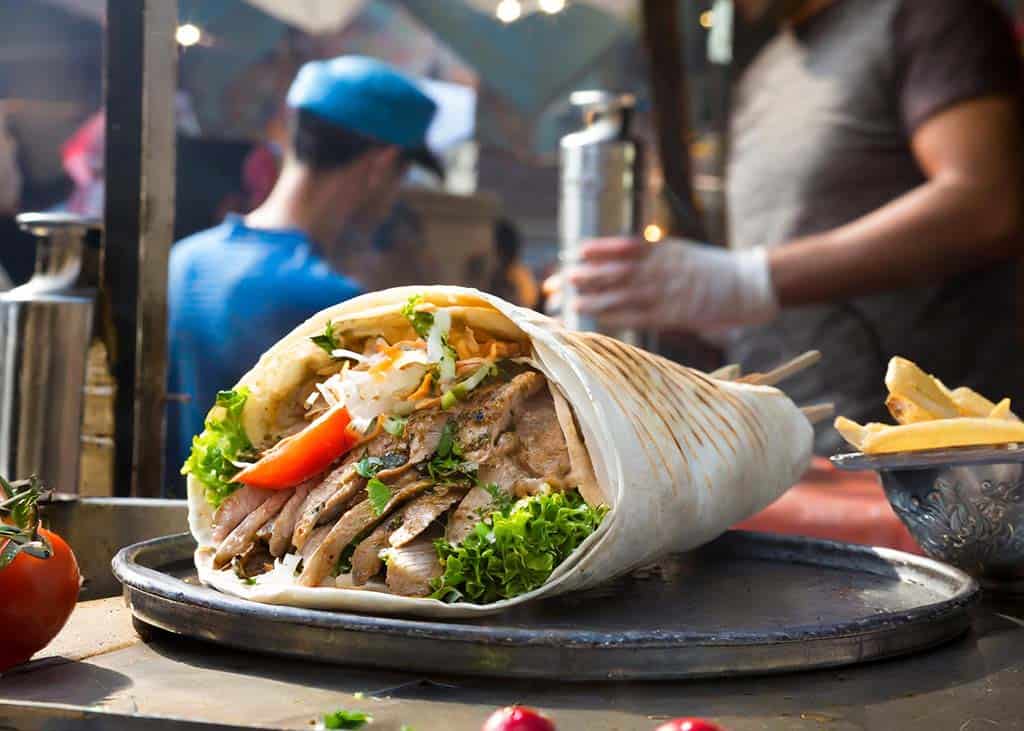
Our culinary journey through Egypt takes a savory turn as we introduce you to Shawarma, a delectable street food delight that has become a symbol of on-the-go indulgence. Though its roots trace back to the Middle East, Shawarma has made its mark on Egyptian cuisine, evolving into a beloved street food favorite.
Traditionally made with marinated meat (commonly beef, chicken, or lamb), Shawarma is cooked on a vertical rotisserie, creating succulent, thinly sliced layers that capture the essence of slow-roasted perfection. The result is a symphony of flavors, from the smoky notes of the outer layer to the juicy tenderness within.
Shawarma’s magic lies in its spice-laden marinade, typically featuring a blend of garlic, cumin, coriander, and other aromatic spices. The marinated meat is stacked onto a vertical spit and slow-cooked as it rotates, allowing the flavors to meld and intensify. The thin slices are often tucked into a flatbread, creating a portable and satisfying culinary experience.
Common accompaniments include tahini sauce, tomatoes, cucumbers, and pickles, adding layers of freshness and crunch to the savory ensemble. This marriage of textures and tastes is what makes Shawarma a street food sensation across Egyptian cities.
While the classic chicken or beef Shawarma is a street food staple, Egypt offers a variety of regional twists. Some regions favor a spicier marinade, while others experiment with different meats or additional herbs. Whether enjoyed by a bustling food cart or a local eatery, each Shawarma experience in Egypt promises a unique and unforgettable journey for your taste buds.
9. Roz Bel Laban: A Sweet Symphony of Creamy Comfort
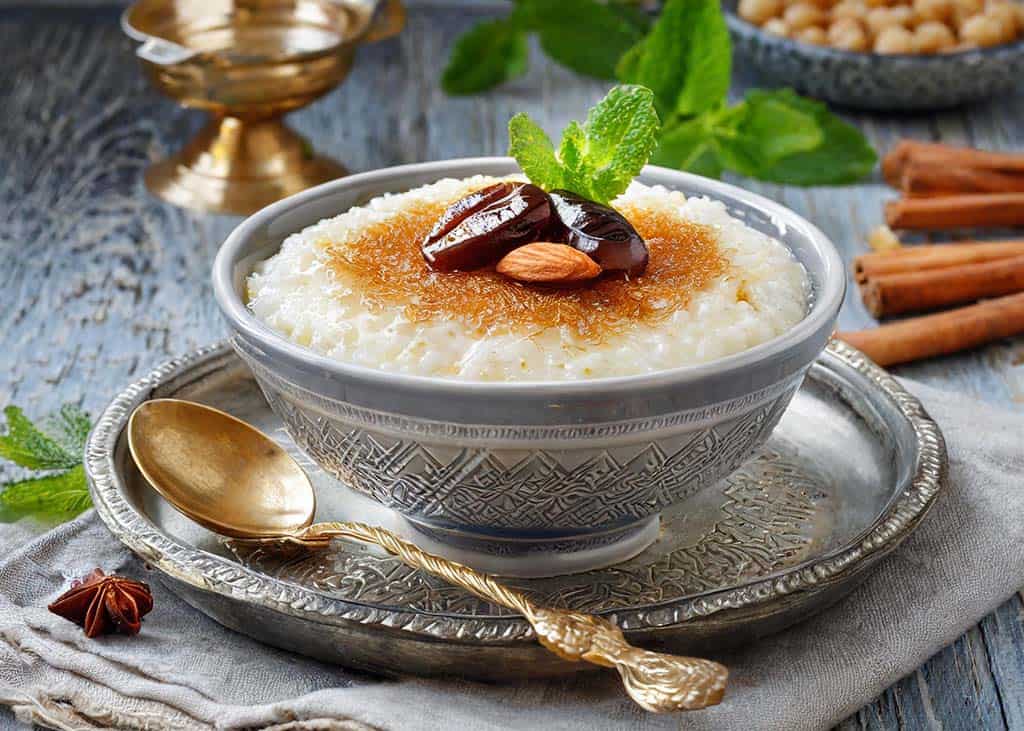
Our culinary adventure in Egypt takes a sweet turn with Roz Bel Laban, a beloved rice pudding that has charmed generations with its velvety texture and comforting sweetness. Translated as “rice with milk,” this dessert is a testament to the Egyptians’ skill in transforming simple ingredients into a culinary masterpiece.
At the heart of Roz Bel Laban is rice, carefully simmered in milk until it achieves a luscious, creamy consistency. Sweetened with sugar and flavored with vanilla or a hint of rosewater, this dessert captures the essence of indulgence. The marriage of rice and milk creates a delicate balance, producing a dessert that is both comforting and luxurious.
Often garnished with a sprinkle of cinnamon or ground nuts, Roz Bel Laban is a visual and aromatic delight that invites you to savor each spoonful. The simplicity of its ingredients harmonizes with the complexity of its flavor profile, creating a dessert that transcends time.
Roz Bel Laban is more than a dessert; it’s a culinary celebration often associated with joyous occasions. In Egypt, it graces tables during weddings, birthdays, and family gatherings, symbolizing sweetness and prosperity. Its presence during festive moments reflects the sentiment that life’s joys are best shared over a bowl of this delightful rice pudding.
10. Basbousa: The Sweet Melody of Egyptian Desserts
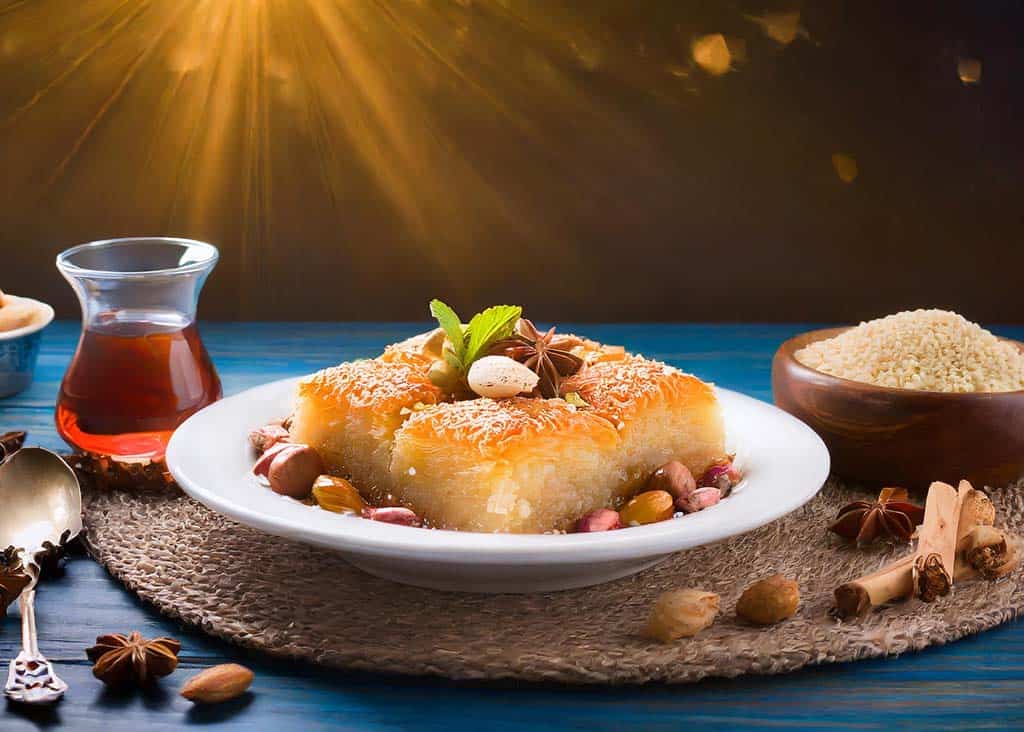
Our gastronomic expedition through Egypt takes a turn towards the sweeter side with Basbousa, a luscious and aromatic dessert that has been enchanting palates for generations. Also known as Hareeseh or Revani in some regions, Basbousa is a semolina cake soaked in sweet and floral syrup, creating a symphony of textures and flavors that capture the essence of Egyptian indulgence.
Basbousa’s magic lies in the simplicity of its ingredients – semolina, yogurt, sugar, and coconut – which come together to form a batter that is both moist and crumbly. The batter is poured into a baking dish, cut into diamond or square shapes, and baked until golden brown.
Once out of the oven, the warm Basbousa is generously soaked in a fragrant syrup made from sugar, water, and sometimes a hint of rose or orange blossom water. This infusion of sweetness ensures that every bite is a decadent experience, balancing the delicate crumb with the richness of the syrup.
Basbousa is not just a dessert; it’s a centerpiece of celebrations in Egypt. From festive family gatherings to special occasions like weddings and holidays, this sweet treat graces tables with its presence. The act of sharing Basbousa is a gesture of hospitality and joy, symbolizing the sweetness of life’s moments.
Beyond its deliciousness, Basbousa embodies the rich cultural heritage of Egypt. It represents the art of turning simple ingredients into a culinary masterpiece, showcasing the country’s mastery of creating desserts that are both comforting and celebratory.
Embark on an Egyptian culinary adventure with Osiris Tours – your gateway to privately guided tours!
As our journey through Egypt’s delectable offerings reaches its conclusion, we invite you to extend your exploration with Osiris Tours. Our luxury and private guided Egypt tours are curated to immerse you in the rich history, cultural heritage, and culinary delights of this enchanting land.
Discover the heart and soul of Egypt through personalized experiences, where our knowledgeable guides will lead you to iconic landmarks, hidden gems, and, of course, the vibrant food scene that makes Egypt a gastronomic haven.
Explore Diverse Culinary Landscapes: From the bustling markets of Cairo to the serene coastal towns, our tours ensure you savor the authentic flavors of Egypt’s traditional dishes.
Tailored Experiences: With Osiris Tours, your journey is uniquely yours. Customize your itinerary, choose your destinations, and indulge in private tours that cater to your preferences.
Expertly Guided Food Adventures: Our guides are not just experts in history; they are connoisseurs of Egyptian cuisine. Let them lead you through local eateries, street markets, and family gatherings, unlocking the stories behind every bite.
Beyond Culinary Delights: Osiris Tours offers a holistic experience, blending cultural immersion with historical exploration. From the pyramids of Giza to the vibrant bazaars, our tours ensure you witness the best of Egypt.
Book Your Culinary Adventure Now: Don’t miss the chance to savor Egypt’s culinary treasures with Osiris Tours. Whether you’re a solo traveler, a couple, or a group of enthusiasts, our private guided Egypt tours guarantee an unforgettable experience.
















